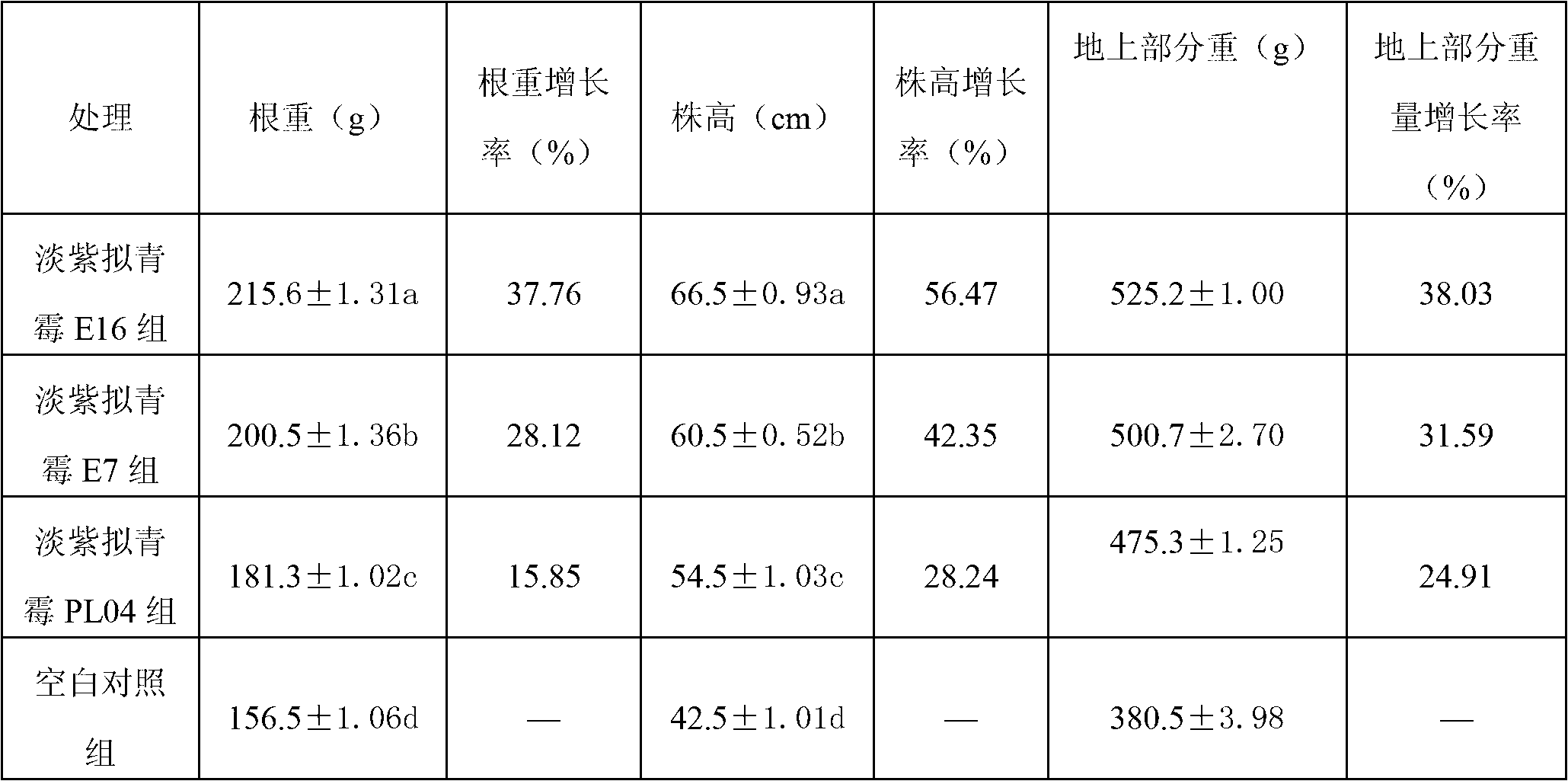Paecilomyces lilacinus and application thereof
A technology of Paecilomyces lilacinus and bacterial strains, applied in Paecilomyces lilacinus and its application field
- Summary
- Abstract
- Description
- Claims
- Application Information
AI Technical Summary
Problems solved by technology
Method used
Image
Examples
Embodiment 1
[0034] Example 1. Isolation and Identification of Paecilomyces lilacinus E16CGMCC No.5951
[0035] 1. Isolation of Paecilomyces lilacinus E16CGMCC No.5951
[0036] Banana plants in the field with severe nematode disease were selected from banana planting areas in Hainan Province, China, and root soil samples were collected, and Paecilomyces was isolated from the soil by the transparent circle screening method. Select a certain amount of soil sample and place it in a triangular flask with sterile water and glass beads, shake it at 180r / min at 28°C for 1 hour, let the soil sample fully disperse, let it stand for 10 minutes, and then dilute it into different dilutions with sterile water Take a certain amount of the soil suspension and spread it on the chitosan selective medium, culture it at 28°C for 4-6 days, pick a single colony to purify it by streaking on the plate, and culture it on the slant medium After 3 days, a single colony was picked and purified repeatedly to obtain ...
Embodiment 2
[0045] Example 2. Parasitism of Paecilomyces lilacinus (Paecilomyces lilacinus) E16CGMCC No.5951 on eggs of root-knot nematode incognita (tomato)
[0046] 1. Preparation of root-knot nematode egg suspension
[0047] Wash the diseased tomato roots with a large number of root-knot nematodes (Meloidogyne incognita), pick out the oocysts under a dissecting microscope, disinfect them with 1% sodium hypochlorite for 3 minutes, rinse them with sterile water for 5 times, and dig out the eggs The capsules were adjusted with sterilized water to make 100 eggs / mL in the suspension.
[0048] 2. Preparation of Paecilomyces lilacinus spore suspension:
[0049] Paecilomyces lilacinus (Paecilomyces lilacinus) E16CGMCC No.5951 strain, Paecilomyces lilacinus E7 strain and Paecilomyces lilacinus PL04 strain were respectively cultured on PDA medium at 25°C for 7d (days), and then used without The spores on the culture medium were washed out with bacterial water, and the spore concentration was...
Embodiment 3
[0063] Example 3. Potted plant and plot experiment of Paecilomyces lilacinus (Paecilomyces lilacinus) E16CGMCC No.5951 controlling banana root-knot nematode
[0064] Test agents: Paecilomyces lilacinus E16 solid bacterial agent, Paecilomyces lilacinus E7 solid bacterial agent, Paecilomyces lilacinus PL04 solid bacterial agent and blank control.
[0065] Test plants: Brazilian banana.
[0066] One, the preparation of Paecilomyces lilacinus solid bacterial agent
[0067] 1. Inclined bacteria:
[0068] Solid slant medium: 200g potato, 20g sucrose, 10g peptone, KH 2 PO 4 0.5g, MnSO 4 0.05g, 18g agar, and dilute to 1L with water. Steam sterilization at 121°C for 20 minutes. Paecilomyces lilacinus was inoculated on the slant medium of the test tube, subcultured and activated at 28°C until the slant was covered with lavender spores.
[0069] 2. Seed culture:
[0070] Seed medium composition: chitosan 20g, sucrose 15g, peptone 10g, bean cake powder 15g, KH 2 PO 4 0.5g, M...
PUM
| Property | Measurement | Unit |
|---|---|---|
| diameter | aaaaa | aaaaa |
Abstract
Description
Claims
Application Information
 Login to View More
Login to View More - R&D
- Intellectual Property
- Life Sciences
- Materials
- Tech Scout
- Unparalleled Data Quality
- Higher Quality Content
- 60% Fewer Hallucinations
Browse by: Latest US Patents, China's latest patents, Technical Efficacy Thesaurus, Application Domain, Technology Topic, Popular Technical Reports.
© 2025 PatSnap. All rights reserved.Legal|Privacy policy|Modern Slavery Act Transparency Statement|Sitemap|About US| Contact US: help@patsnap.com



